The first frost of the season hit our Llano River ranch last weekend, a month later than the average November 15 first frost date prescribed by gardening buffs, farmer’s almanacs and the National Climate Data Center. On December 18, temperatures dropped a dramatic 60 degrees–from 78 to 18 in just a few hours.
Frost Flowers: The Frost Awakens from Roy Spencer on Vimeo.
Butterflies were absent Sunday morning, but we witnessed a different natural majesty. One of our favorite late season nectar plants, Frostweed, Verbesina virginica, graced us with the annual ritual of splitting her stems and producing amazing, delicate ice sculptures.
The airy, fragile constructions pour out of the plants’ stems like Nature’s artisanal meringues. I couldn’t help but think San Antonio’s thriving cocktail culture would appreciate the natural treasures as adornments on fancy adult beverages.
In the fall, Frostweed serves as a prime nectar source for Monarchs and other butterflies. The sturdy Verbesina virginica, with its odd square-like stalks, sports fleshy green flanges on its stems. The wildflower produces lush white blossoms from late August through November in semi-shade that provides respite from the late summer sun. The flowers bloom in big colonies along the rivers and streams of the Texas Hill Country.
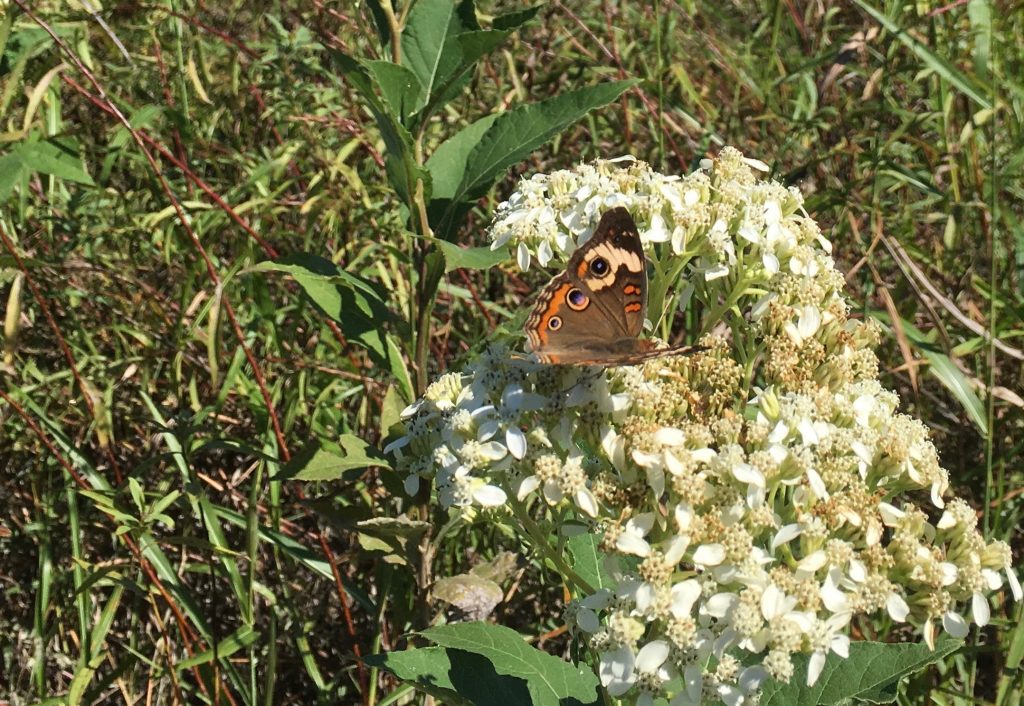
Buckeye on Frostweed, Llano River
Along our stretch of the Llano River, Frostweed lines the riverbanks. This last year was spectacular with our well-timed rains. In September and October, the Frostweed forest was home to myriad butterfly species, bees, beetles and wasps. This plant is gorgeous, drought tolerant, a generous seed and nectar producer, and the butterflies love it. I don’t understand why it’s not more available in local nurseries.
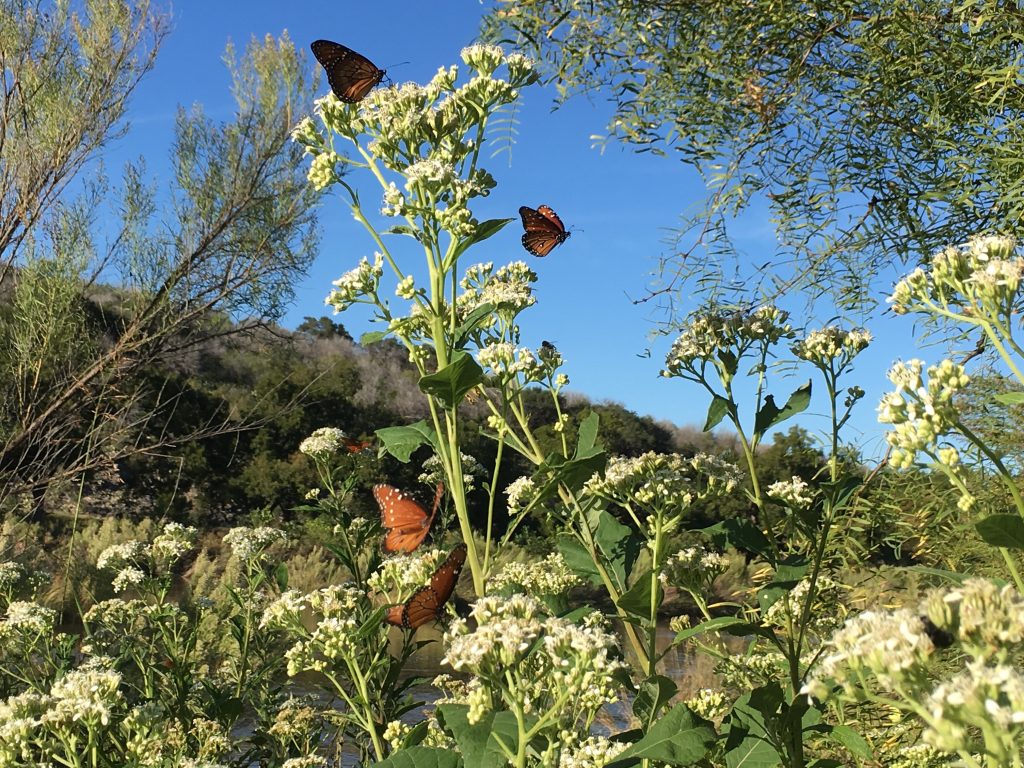
Queens on Frostweed, Llano River Photo by Monika Maeckle
As a member of the aster family, Frostweed can reach six-eight feet in height in a good year. Upon first frost, the stem splits, the sap oozes out and freezes to form fascinating curled ice ribbons and intriguing sculptures. That’s why it’s called Frostweed, or sometimes, Iceweed. See the amazing video by Roy Spencer, above, to witness the process.
Only a handful of species commonly exhibit this behaviour. Bob Harmes of the University of Texas coined the term, crystallofollia, to describe the phenomenon, from the Latin crystallus, ice, and folium, leaf.
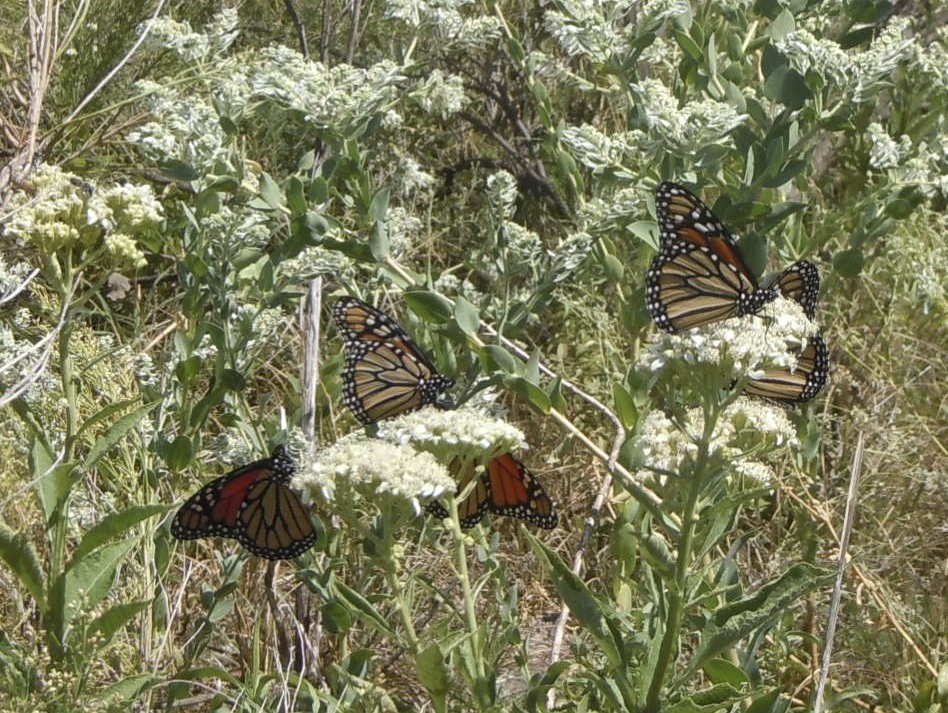
Frostweed is a magnet and important nectar source for migrating Monarchs in the fall. Photo by Monika Maeckle
Another student of Frostweed and crystafollia, Dr. James Carter, a professor emeritus in the department of geography and geology at Illinois State University, points out that “the ice formation far exceeds the amount of moisture from sap locally available in the stem, and must be augmented by water drawn up from the roots.” Frostweed’s rhizomes help it slurp up moisture in the soil to produce the ice formations. The robust root system also makes it easy to propagate the plant from its roots as well as from seed.
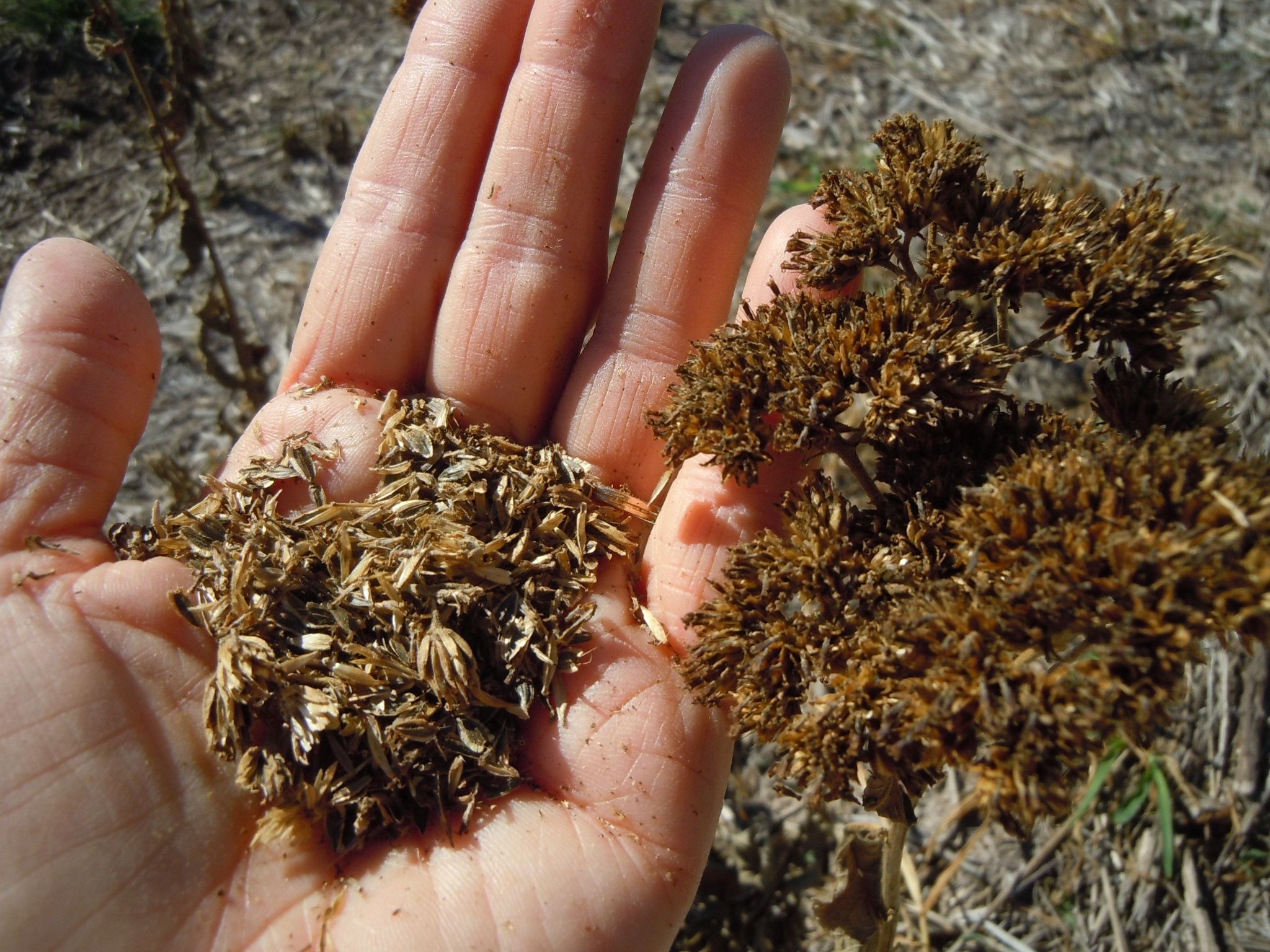
Frostweed produces generous seed and nectar. And it’s easy to grow. Photo by Monika Maeckle
According to an article in the September-October 2013 issue of Scientific American, written by Carter, formal study of the process is limited.
For a fascinating blow-by-blow of what actually occurs botanically in the forming of these sculptures, see Bob Harms’ of the University of Texas at Austin Plant Resources Center Biophysica of Crystallofolia website.
Related posts:
- New Study: Nectar plants more important than milkweed in Monarch migration
- How to plan a successful butterfly and pollinator garden
- Mostly native butterfly garden outperforms lawn every time
- A year in the life of an urban butterfly garden
- Downtown River walk plot converts to pollinator garden, creature haven
- Converting your Lawn to a Butterfly Garden
- San Antonio becomes first National Wildlife Federation Monarch Champion city
- Late season Monarchs create gardening quandary
- What to do with late season Monarchs
- Tropical Milkweed: To Plant it or Not is No Simple Question
- How to raise Eastern Swallowtails
- How to raise Monarch butterflies at home
Like what you’re reading? Don’t miss a single post from the Texas Butterfly Ranch. Sign up for email delivery, like us on Facebook, or follow us on Twitter, @monikam.

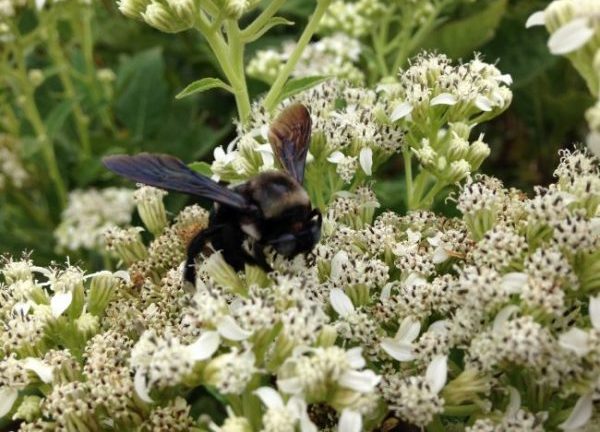
I”m trying to get fall nectar & colors to my garden, would frost weed grow in Colorado & does any body have seeds??
Thanks
[…] didn’t realize, until I happened to come across an article by Monika Maeckle, with Texas Butterfly Ranch, that Frostweed gets its name, not from any normal blooming adornment, […]
Where can I find frosted seed?